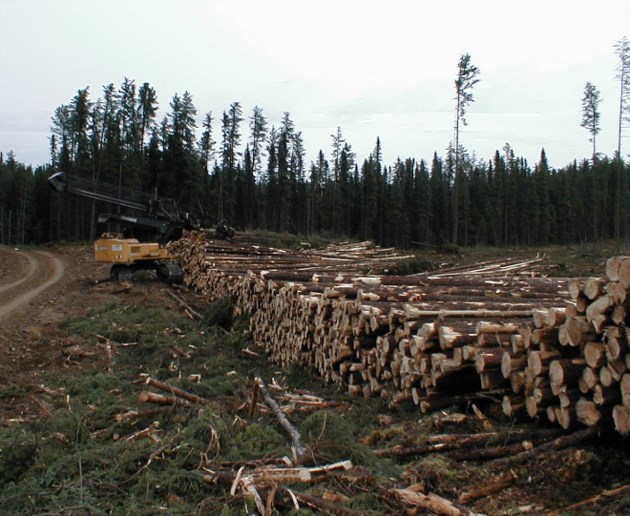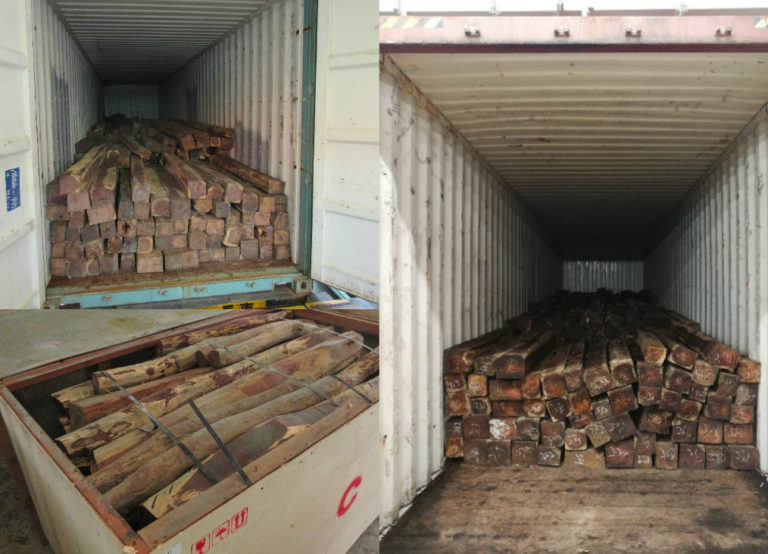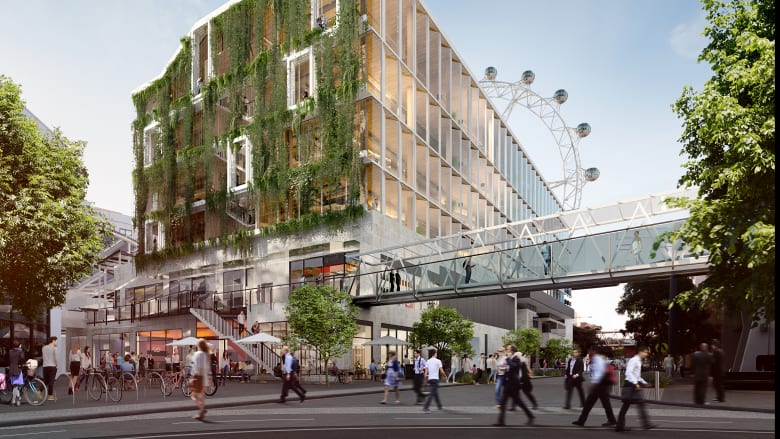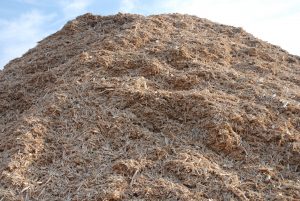 Despite the fiery rhetoric, the softwood trade dispute is “much ado about nothing“, according to David Milstead (Globe and Mail), due to the exceptionally strong US housing market where Canadian producers can recoup the tariff from their customers and US builders can pass the cost on to the home buyer. In related news, Bruce Yandle (Washington Examiner), says it’s obvious that Trump’s trade policy is “stiff-arming consumers” as well as benefiting Canadian producers with US operations.
Despite the fiery rhetoric, the softwood trade dispute is “much ado about nothing“, according to David Milstead (Globe and Mail), due to the exceptionally strong US housing market where Canadian producers can recoup the tariff from their customers and US builders can pass the cost on to the home buyer. In related news, Bruce Yandle (Washington Examiner), says it’s obvious that Trump’s trade policy is “stiff-arming consumers” as well as benefiting Canadian producers with US operations.
Other headlines include: covering-up the caribou loss in Canada; putting out practice-fires in Oregon; making CLT fireproof in California; and growing black walnut trees as cash-crops in PEI.
Finally, an expose on Hong Kong’s timber-trafficking problem, including the species involved, the routes used and the enforcement challenge.
–Kelly McCloskey, Tree Frog Editor


 In the rhetorical battles that accompany a trade war, each tariff and retaliatory duty is an economy-wrecking job killer… In the case of the softwood-lumber tariff, an exceptionally strong U.S. housing market has created a different set of truths. Canadian lumber producers seem to have recouped the entirety of the tariff from their customers, U.S. builders that have in turn passed along the costs to the American home buyer. And because of the small amount of lumber in the typical U.S. house, the end impact is not nearly as punishing as the U.S. home-building industry claims. For now, in this environment, the economics suggest the lumber tariffs are much ado about not much at all. …Jerry Howard, the CEO of the National Association of Home Builders.“This whole situation being fuelled by greedy lumber companies… They are behaving almost like a cartel. … “I’m not really sure how us having tariffs applied to us by the U.S. industry results in us working with them,” says Susan Yurkovich, president of the British Columbia Lumber Trade Council.
In the rhetorical battles that accompany a trade war, each tariff and retaliatory duty is an economy-wrecking job killer… In the case of the softwood-lumber tariff, an exceptionally strong U.S. housing market has created a different set of truths. Canadian lumber producers seem to have recouped the entirety of the tariff from their customers, U.S. builders that have in turn passed along the costs to the American home buyer. And because of the small amount of lumber in the typical U.S. house, the end impact is not nearly as punishing as the U.S. home-building industry claims. For now, in this environment, the economics suggest the lumber tariffs are much ado about not much at all. …Jerry Howard, the CEO of the National Association of Home Builders.“This whole situation being fuelled by greedy lumber companies… They are behaving almost like a cartel. … “I’m not really sure how us having tariffs applied to us by the U.S. industry results in us working with them,” says Susan Yurkovich, president of the British Columbia Lumber Trade Council.





 VICTORIA – The Forest Practices Board will examine the activities of A&A Trading Ltd. (A&A) and Terminal Forest Products Ltd. (Terminal) on forest licence A19229, in the Sunshine Coast Natural Resource District, during the week of July 9, 2018. Auditors will examine whether harvesting, roads, silviculture, fire protection and associated planning, carried out by A&A and Terminal between July 1, 2016, and July 13, 2018, met the requirements of the Forest and Range Practices Act and the Wildfire Act. The audit area is located near Sechelt and Powell River, in the Sunshine Coast Timber Supply Area (TSA). Forest licence A19229 has an allowable annual cut of 125,966 cubic metres per year, and is located on rugged and remote terrain, accessible only by helicopter and boat. The TSA is home to several species at risk, including the marbled murrelet and the northern goshawk.
VICTORIA – The Forest Practices Board will examine the activities of A&A Trading Ltd. (A&A) and Terminal Forest Products Ltd. (Terminal) on forest licence A19229, in the Sunshine Coast Natural Resource District, during the week of July 9, 2018. Auditors will examine whether harvesting, roads, silviculture, fire protection and associated planning, carried out by A&A and Terminal between July 1, 2016, and July 13, 2018, met the requirements of the Forest and Range Practices Act and the Wildfire Act. The audit area is located near Sechelt and Powell River, in the Sunshine Coast Timber Supply Area (TSA). Forest licence A19229 has an allowable annual cut of 125,966 cubic metres per year, and is located on rugged and remote terrain, accessible only by helicopter and boat. The TSA is home to several species at risk, including the marbled murrelet and the northern goshawk.




 A third biomass power company has made plans to temporarily wind down operations following a veto by Gov. Chris Sununu of a bill to help prop up the industry, an official confirmed Tuesday. Bridgewater Power Plant in Ashland joins two other plants in the state that have stopped buying wood chips from local suppliers and are planning to burn through their stockpile in the coming weeks, according to Michael O’Leary, the plant’s asset manager. The plant will then switch to “dispatch mode,” standing by with a small reserve of fuel ready to provide power at the request of ISO New England, which runs the area electric grid, according to O’Leary. …The decision to cancel wood purchases was a direct result of Sununu’s veto of Senate Bill 365, according to O’Leary. That bill would have mandated that utilities purchase power from the biomass plants – which have struggled to remain profitable amid a flood of cheap natural gas – at 80 percent of the market rate.
A third biomass power company has made plans to temporarily wind down operations following a veto by Gov. Chris Sununu of a bill to help prop up the industry, an official confirmed Tuesday. Bridgewater Power Plant in Ashland joins two other plants in the state that have stopped buying wood chips from local suppliers and are planning to burn through their stockpile in the coming weeks, according to Michael O’Leary, the plant’s asset manager. The plant will then switch to “dispatch mode,” standing by with a small reserve of fuel ready to provide power at the request of ISO New England, which runs the area electric grid, according to O’Leary. …The decision to cancel wood purchases was a direct result of Sununu’s veto of Senate Bill 365, according to O’Leary. That bill would have mandated that utilities purchase power from the biomass plants – which have struggled to remain profitable amid a flood of cheap natural gas – at 80 percent of the market rate.


 DENVER — A growing wildfire destroyed more than 100 homes in the Colorado mountains, while other blazes across the parched U.S. West kept hundreds of other homes under evacuation orders Tuesday and derailed holiday plans. Authorities announced late Monday that a fire near Fort Garland, about 205 miles (330 kilometers) southwest of Denver, had destroyed 104 homes in a mountain housing development started by multimillionaire publisher Malcolm Forbes in the 1970s. The damage toll could rise because the burn area is still being surveyed. …The blaze, labeled the Spring Fire, is one of six large wildfires burning in Colorado and is the largest at 123 square miles (318 square kilometers) — about five times the size of New York’s Manhattan. While investigators believe it was started by a spark from a fire pit, other fires, like one that began burning in wilderness near Fairplay, were started by lightning.
DENVER — A growing wildfire destroyed more than 100 homes in the Colorado mountains, while other blazes across the parched U.S. West kept hundreds of other homes under evacuation orders Tuesday and derailed holiday plans. Authorities announced late Monday that a fire near Fort Garland, about 205 miles (330 kilometers) southwest of Denver, had destroyed 104 homes in a mountain housing development started by multimillionaire publisher Malcolm Forbes in the 1970s. The damage toll could rise because the burn area is still being surveyed. …The blaze, labeled the Spring Fire, is one of six large wildfires burning in Colorado and is the largest at 123 square miles (318 square kilometers) — about five times the size of New York’s Manhattan. While investigators believe it was started by a spark from a fire pit, other fires, like one that began burning in wilderness near Fairplay, were started by lightning.